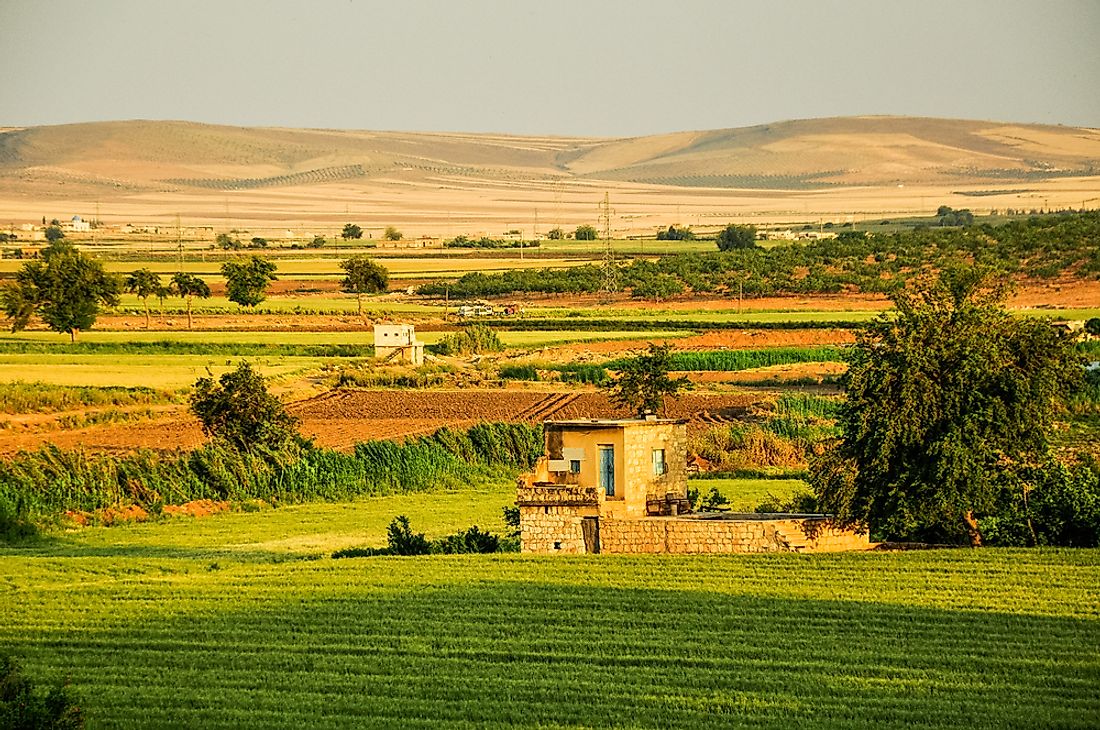What Are The Major Natural Resources Of Syria?

Syria is a country in the Middle East. It is characterized by fertile plains, deserts, and high mountains. The economy of Syria is very unstable due to the ongoing civil war. Before the civil war began, the country’s economic pillars were agriculture and oil, which together accounted for almost half of the GDP. However, since the outbreak of the war, Syria has suffered massive economic sanctions restricting trade with the European Union, the Arab League, as well as several countries, especially in Europe and Asia. Despite the challenges it faces, Syria has several natural resources some of which have not been exploited. Some of these natural resources include:
Oil
One of the major contributors to the Syrian economy is its energy. Along with natural gas reserves, Syria is home to crude oil fields. According to the IMF, before the civil war broke out in Syria, oil sales for 2010 was estimated to generate over $3.2 billion and accounted for 25% of the government revenue. After several years of exploration, oil was eventually discovered in 1956 in Karachuk. The oil that was discovered mainly consisted of heavy, high-sulfur. Syria is a relatively small oil producer, accounting for only 0.5% of the world’s production. The national oil output has declined over the years due to the ongoing civil war and international sanctions. It is estimated that Syria’s proven oil reserve is about 2.5 billion barrels, slightly larger than all its neighbors except Iraq. Much of the oil is crude and heavy making it expensive to refine.
Natural Gas
Syria has a wealth of natural gas reserves, estimated to be holding 8.5 trillion cubic feet of natural gas. It is the most abundant natural resource in Syria. The country registered positive growth in natural gas production from 2001 to 2010. In 2010, it produced 7.8 million cubic meters of natural gas, the highest that has ever been recorded in the country’s history. However, the Syrian Civil War has greatly affected production. In 2015, Syria produced only 4 million cubic meters, way below its capacity. While much of its crude oil is exported to the foreign market, the natural gas produced is used locally for domestic electricity generation.
Phosphate
Phosphate rocks are some of the major minerals exploited in Syria. According to recent estimates, Syria possesses extensive phosphate reserves which can amount to 1,700 million tons, of which the country estimates about 3.5 million tons per year. Although the production dropped sharply in the 1990s following a global fall in demand and prices, the production increased to 2.4 million in the 2000s. In 2009, Syria accounted for about 2% of the world’s phosphate rock output, ranking it the 9th largest phosphate rock producer in the world. About 700 tons of phosphate is invested locally in fertilizer plant for the manufacture of phosphoric acid and superphosphate and the rest is exported to various destinations. The operation and mining of phosphate in Syria are supervised by the Ministry of Petroleum and Mineral Resources. The phosphate mining sites in the country include Sawwaneh, Charkiet, and Khnevis. Phosphate production is expected to increase in the future. However, the ongoing civil war and tension with the neighboring country, Turkey, is expected to affect the production.
Agricultural Land
Agriculture is one of the major priorities in Syria’s economic development plans, as the state seeks to be food self-sufficient. Apart from sustained capital investment, development of infrastructure, better prices, and subsidies on input, Syria has large agricultural potential land. The agricultural land was reported at 76% of the total land area in 2014 by the World Bank, or 139,210 square kilometers. Of Syria’s total land area of 185,180 square kilometers, about 25.4% or 4.6 million hectares is arable land.
Other Major Minerals Of Syria
Apart from the above resources, Syria is also rich in several metallic and non-metallic mineral resources. It is one of the major producers of cement in the Middle East region. In 2010, it produced about 10 metric tons of cement, which was more than double what it produced in 2000. The cement plants in Syria are operated by the General Organization for Cement and Building Material. The Syrian mining sector also produced minerals such as steel, salt, gypsum, chrome ore, manganese ore, marble, gypsum, and industrial salt. However, most of these minerals are produced in small quantities and do not contribute much to the economy.











